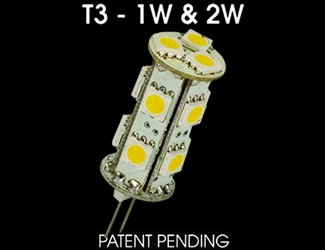 Simplified Voltage Distribution
Simplified Voltage Distribution
Without getting too complicated, let’s look as how a low voltage landscape lighting system works. First and foremost, you need a transformer. This transformer will reduce the amount of voltage being sent to the fixtures. Most systems are 12 Volt systems, which means when you plug the transformer into a 120 volt outlet, it has to reduce the voltage down to accommodate the system’s 12 volt requirement. Now, because the fixtures are not all right beside the transformer, wire has to be run from the transformer to each fixture. This distance, along with the number of watts on that run, are used in determining how much voltage loss you’ll have at the light itself. Most transformers have various taps that put out anywhere from 11 to 15 Volts to accommodate for this voltage drop. These calculations are very important in halogen systems in order to ensure maximum lamp life and equal brightness throughout the system. As stated above, higher voltage means less lamp life…but it also means a brighter lamp. The recommended voltage at each light for a halogen lamp is between 10.8 and 11.5. Where 12 Volts would theoretically give you 100% bulb life and 100% brightness, the recommended range allows for a much longer lamp life without loosing too much in the way of brightness. This range for LED lamps is MUCH greater. They can operate anywhere from 10 to 18 Volts without sacrificing bulb life or a noticeable difference in brightness. In addition, the lower wattage on that run means that you’re loosing much less voltage anyhow. This allows you to put more lights on a run, use smaller gauge wire, and in the future you’re less likely to negatively effect the system by adding more lights.
